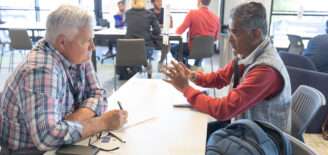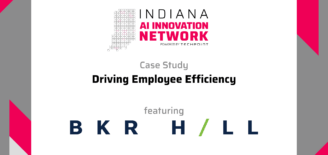DCODIA app helps student with dyslexia read, saves families thousands
What if your child had dyslexia and it cost you an extra $500 a month just to support her reading and other educational needs? You’d do whatever it takes – it’s your kid – but you would also wonder if there’s a better solution, because at least some of that monthly expenditure should be going toward her college fund and not on make shift technologies that are almost good enough.
Enter DCODIA.
 DCODIA is an inexpensive and easy-to-use iPhone app that empowers students with dyslexia to deal with problem words on their own. As any parent, teacher or tutor can attest, students can get very frustrated (even demoralized) when their independence is challenged or they have to keep relying on an adult to get unstuck. I would imagine the same is true and then some for children dealing with dyslexia because they become a target for being different, especially in classrooms.
DCODIA is an inexpensive and easy-to-use iPhone app that empowers students with dyslexia to deal with problem words on their own. As any parent, teacher or tutor can attest, students can get very frustrated (even demoralized) when their independence is challenged or they have to keep relying on an adult to get unstuck. I would imagine the same is true and then some for children dealing with dyslexia because they become a target for being different, especially in classrooms.
Here’s how DCODIA works. Using an iPhone, the student takes a picture of the problem word or words, and DCODIA dictates the word aloud from the captured image. All of the data is stored and assembled into reports viewed online that can also be exported. In response, parents, teachers or tutors can use the reports to provide customized remediation in decoding strategies.
DCODIA built the app around the Orton-Gillingham (OG) approach, which is a multisensory method of reading instruction that reinforces memory by having the student listen, then read, speak and write the word all at the same time. The app replaces needing someone to be with the student at all times to help with sounding out the words.
In addition to the usage reports that capture problem words, DCODIA’s proprietary algorithm that’s currently being implemented will offer a layer of data that has never before been available among assistive reading technologies.
“The real magic happens behind the scenes,” said Mark LaFay, co-founder and chief operating officer. “We have developed an algorithm that breaks words down and categorizes them in a manner that is truly useful to Orton-Gillingham-trained tutors and reading specialists who provide remediation to students with Dyslexia.
“Currently, there is no solution like ours on the market,” LaFay continued. “Parents are forced to piecemeal multiple technologies together to try to help give their kids an edge. They spend, on average, over $500 a month per child with dyslexia to support them through their primary school years. Our technology is cheap and can reduce some of the additional costs that parents may be incurring by utilizing multiple technologies to do what ours can do in one cheap-and-easy package. Further, our technology complements the gold standard, Orton-Gillingham, for dyslexia intervention.”
The idea for DCODIA originally came from Co-founder and CEO Kris Parmelee. Her son, Sam, has dyslexia and she tried all sorts of technologies like Kurzweil 3000, Intel Reader, Dyslexia Pen, and various other software and products designed for the visually impaired and not dyslexics. Kris started thinking about the apps on her smartphone and eventually connected with Purdue engineering and tech graduate LaFay. In the beginning, LaFay thought Google Glass would be ideal for a dyslexia solution, but in order to be useful and affordable for the people who most need it, the new business partners zeroed in on the existing iPhone infrastructure as the smarter first step for the startup.
DCODIA is in its second Beta version after just nine months with a group of about 400 users signed up and providing feedback. The startup plans to launch a paid version of the application this fall having learned a lot about how people use technology and smartphone photography.
“The most challenging part of developing DCODIA thus far has been doing it with no money,” LaFay said. “We have great relationships with developers, and designers and for whatever reason, they have been very willing to extend us grace during this early-stage of DCODIA’s development. We are currently seeking seed funding to kick the project into high gear and we aim to have that process finished by the end of the year.”
DCODIA APP SCREEN SHOTS








